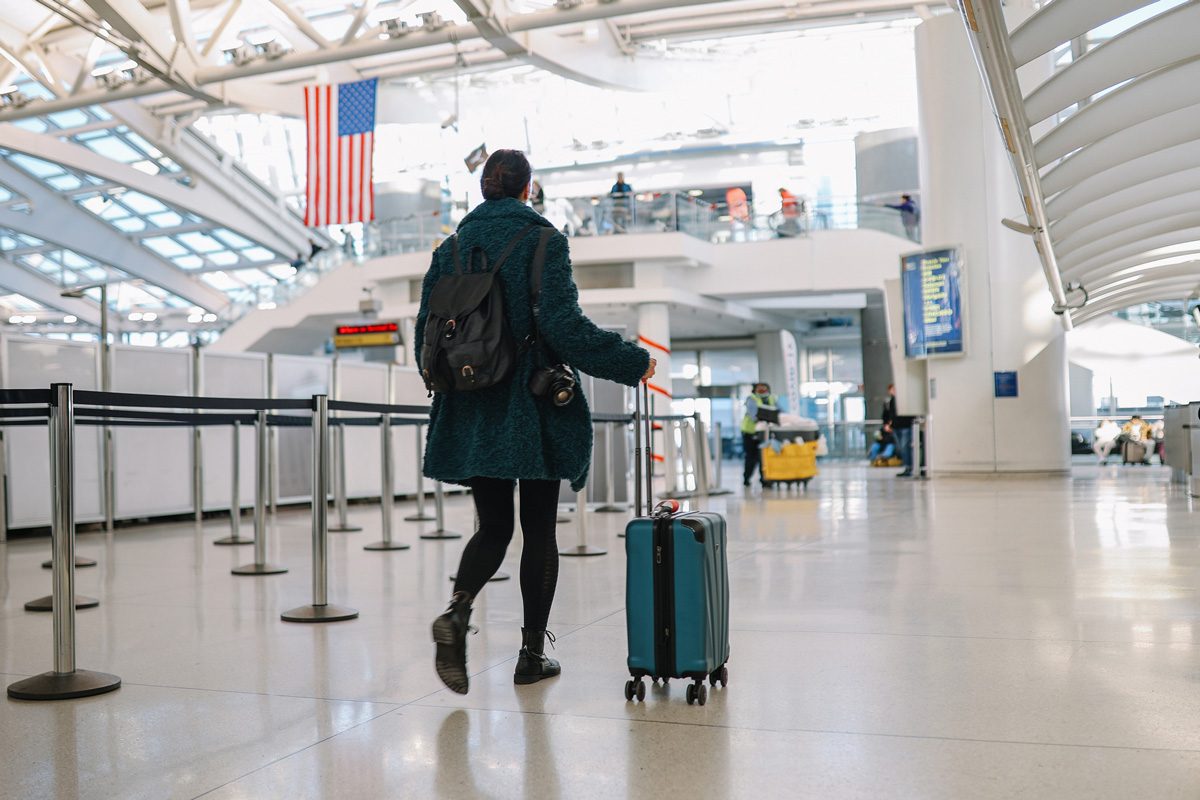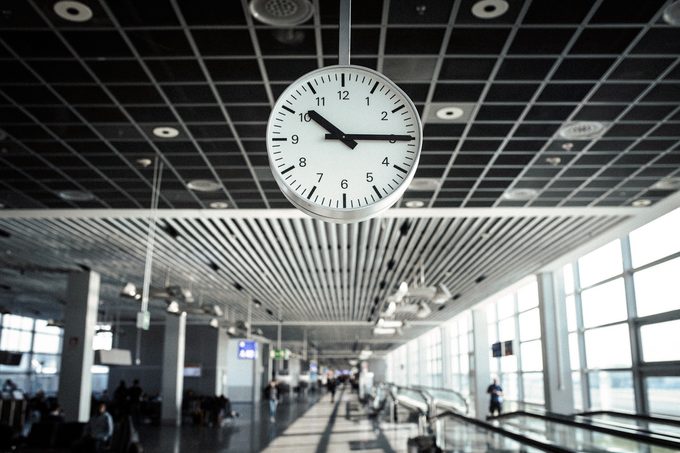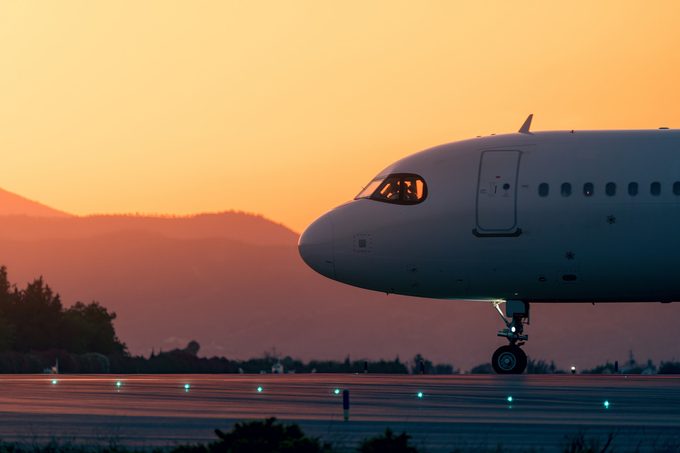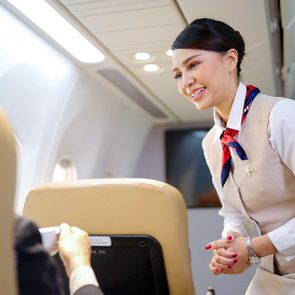Flight disruptions are a drag! Check out these expert tips for the best time to fly to avoid flight delays and cancellations.

When Is the Best Time to Fly to Avoid Delays and Cancellations?

Picture this: Your bags are packed, you’ve breezed through security, and you’ve even found overhead space on board for your carry-on luggage. But just as you’re settling into your seat, you hear the dreaded announcement: Your flight—yes, the one you’re currently sitting on—is delayed. As a frequent traveler, I’ve experienced so many delays and cancellations that I now include an extra day on both ends of my trips. And I’m not the only one. “About 85% of my clients face travel disruptions including delays, cancellations and lost luggage,” says Phoneix Sagen, owner of MyTravel4Ever agency with nearly 30 years of flight and travel booking experience and a frequent traveler herself. So, is there a way around this? When is the best time to fly to avoid delays and cancellations?
Unfortunately, travel disruptions are common. According to data reported by 15 U.S. airlines to the U.S. Department of Transportation, in 2024, a whopping 21% of flights were delayed. Ahead, Sagen and our other travel experts—Dave Grossman, the founder of MilesTalk, and Patrick Smith, an airline pilot and the founder of Ask the Pilot—offer their insight on the best time to fly, whether you should fly back in the afternoon or night and other tips for a smooth journey.
Get Reader’s Digest‘s Read Up newsletter for more travel, tech, cleaning, humor and fun facts all week long.
Are delays and cancellations really tied to the time of day you fly?
Morning flights are much less likely to be canceled, according to Expedia’s 2025 Air Hacks report. However, the time of day isn’t the cause for delays and cancelations; it’s the accumulation of disruptions caused by a variety of factors—such as weather conditions, mechanical issues and staffing shortages—throughout the day that can lead to more delays and cancellations as the day goes on.
“Early morning flights are generally the most reliable because the aircraft is already parked at the airport from the night before, and the air traffic system hasn’t had time to accumulate delays yet,” says Sagen. “As the day goes on, delays from earlier flights start to stack up, causing a domino effect.”
When is the best time to fly to avoid issues?

The best time of day to fly to avoid travel disruptions is between 9 a.m. to 3 p.m. According to Expedia’s recent report, flights departing within this window faced the lowest rate of cancellations in 2024. The report also found August had the shortest delays and August and September had the fewest canceled flights.
Taking an early morning flight not only means you’re less likely to encounter delays, but should your flight get canceled, you’ll have the rest of the day to be rebooked. And, with an earlier flight, you have a better chance of retrieving your bag. “Lost luggage is often a result of flight delays and tight connections,” Sagen says. “When flights are delayed, the risk of bags not making it onto connecting flights also increases. And when delays stack up, baggage handlers have less time to transfer luggage between planes.” Flying earlier in the day gives the airlines more time to locate and reroute your bag if it does go missing.
When should you fly in the afternoon or night?
If it’s more important to you to book the cheapest flights, avoid the airport crowds, or fit in an extra excursion at the end of your trip, you may decide you want to fly at a different time, such as afternoon, evening, or overnight. Here’s some expert insight to help you decide what other times of day may be best for you.
Midday flights: Good for calm mornings, bad for crowds, middle-of-the-road for disruptions
If you’re like me and more of a night owl than an early bird, you may want to skip those first flights of the day. Sagen says late morning to early afternoon flights still tend to run fairly smoothly. But you’re more likely to encounter crowds, as this is the busiest time at the airport.
If your schedule is flexible and you want to lower your risk of disruptions without sacrificing your sleep and you want to encounter fewer crowds, consider traveling on a Tuesday—Expedia found this to be the quietest day.
Late afternoon and early evening flights: Fewer crowds, higher risk of disruptions
“If you fly in the off hours, you are generally going to have a much more relaxed airport experience with fewer people rushing about,” says Grossman. Another reason you might choose a late afternoon or evening flight is for the convenience of departing after work so you can save a vacation day. But, Sagen says, these flights also come with a higher risk of delays as the day goes on.
Overnight flights: Cheaper, quieter and best for maximizing time at your destination. But most likely to get canceled
“Red-eye flights are great if you want to avoid crowds, get cheaper fares or maximize your time at your destination,” Sagen says. “But they can be exhausting.” And according to Expedia, they are the most likely to face disruptions—flights that depart after 9 p.m. have a 57% higher chance of cancellation compared with those that leave earlier in the day.
What is the least crowded time of day to fly?
The least crowded plane times are the first and last flights of the day. “Early mornings (before 7 a.m.) and late-night flights (10 p.m. on) have fewer passengers, shorter lines at security and less overall chaos in the terminal,” Sagen says. “I don’t like crowds and prefer a calmer and quieter travel experience and these times align with that.”
What is the busiest time of day to fly?
Unsurprisingly, late morning (around 9 a.m.) through early evening (around 5 p.m.) is the busiest time to fly. “People like to avoid waking at 3 a.m. and also want to get where they’re going without wasting the day,” Grossman says. And that’s a major reason that some seasoned travelers, like Sagen, avoid that time. “This is the peak travel window when airports are super busy with business travelers, families and international flights all converging at once,” she says.
What are the cheapest times of day to fly?

The beginning and end of the day tend to be the cheapest time to fly. “Generally, the very first flight or the last flight of the day if it’s a late one will be the cheapest since they are least desirable,” Grossman says.
Advice on avoiding and handling flight delays and cancellations
When we fly, we’re at the mercy of the airlines, as well as the weather and other factors that are mostly out of our control, which is why Smith’s suggestion is not to overthink it. “There’s no real ‘hack’ to avoiding delays because so much depends on weather.” While there may not be a perfect solution or secret flight hack for completely avoiding delays and cancellations, there are things you can do to help ensure a smooth journey.
Be flexible and manage your expectations
So many things can cause travel delays, including weather, computer outages, mechanical issues, staffing shortages and more. Even something as simple as a faulty overhead bin can delay a flight, as I recently learned on a flight from Costa Rica when one overhead bin wouldn’t close—and that delayed flight then snowballed into me missing my connecting flight, overnighting in an airport hotel, getting food poisoning and arriving at my destination a full day late.
Sagen regularly deals with flight delays and cancellations in her work and her own travels, and she says that sometimes the issues start before you even arrive at the airport. Transportation strikes in Europe, for example, have prevented her clients from getting to the airport—so even though your flight may be on time, you may not be if something out of your control prevents you from getting there! It’s important to be mentally prepared that any number of things can go wrong and do your best to stay flexible. Then, if everything is on time, you’ll be pleasantly surprised.
Build in a buffer day
It’s wise not to book nonrefundable hotel stays, cruises or tours on your flight day. I always consider my departure day as a flight-only day with no other scheduled commitments, and Sagen always sends her cruise clients to their port city a day before they need to board the ship to avoid unforeseen disasters. One of Sagen’s clients, a family of six, was unable to fly in a day early, and when they encountered flight delays en route, they arrived late and, quite literally, missed the boat and thus the entire cruise—by one hour.
Consider off-peak travel periods
“No matter what time of day, if you’re traveling during peak seasons (major holidays, spring break, etc.), you should expect more congestion and plan accordingly,” Sagen says. “The week before Christmas to the week after New Year’s are always the busiest and most expensive times to travel worldwide.”
Purchase travel insurance
Be sure to arrange travel insurance that includes trip cancellation and disruption to help cover any unplanned expenses.
Avoid tight connections
When booking your flights, give yourself time between connections—I recommend at minimum, one hour for domestic flights and two hours for international, though preferably more. If I’m flying through larger international airports, I try to book an even longer layover to ensure ample time for delays, as well as any customs, immigration, or security checks. Longer layovers also help ensure your luggage has time to make it onto your connecting flight, too.
Set up text or in-app alerts
When you book your flight, consider opting in for text or in-app airline alerts so if there are any delays or cancellations, you’ll be notified immediately—sometimes before the airline staff makes an announcement. I’ve noticed I often receive text or in-app notifications about flight delays and cancellations before they’re announced in the airport or on board the plane, giving me a headstart on rebooking.
About the experts
|
Why trust us
Reader’s Digest has published hundreds of travel stories that help readers explore the world safely, easily and affordably. We regularly cover topics such as the best places to visit (and the best times to visit them), tips and tricks to zoom through airport security, flight-attendant secrets, hotel-room hacks and more. We’re committed to producing high-quality content by writers with expertise and experience in their field in consultation with relevant, qualified experts. We rely on reputable primary sources, including government and professional organizations and academic institutions as well as our writers’ personal experiences where appropriate. We verify all facts and data, back them with credible sourcing and revisit them over time to ensure they remain accurate and up to date. For this piece on airports with the longest wait times, Sunny Fitzgerald tapped her experience as a longtime travel writer and frequent traveler to ensure that all information is accurate and offers the best possible advice to readers. Read more about our team, our contributors and our editorial policies.
Sources:
- Phoenix Sagen, owner of MyTravel4Ever, a sustainable adventure travel agency
- Dave Grossman, founder of MilesTalk
- Patrick Smith, an airline pilot and the founder of Ask the Pilot
- United States Department of Transportation: “Bureau of Transportation Statistics”
- Expedia: “2025 Air Hacks”






















